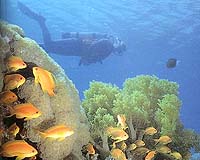 |
Glastonbury CT (SPX) Jul 28, 2010 TopCoder has announced the success of a pilot competition that tasked its global community of software programmers with helping to develop the next generation of capabilities NASA will need for its crews to live and work in space. Conducted by Harvard Business School and London Business School/MLab, the NASA-TopCoder Challenge asked TopCoder members to create improved mathematical algorithms to determine the optimal contents of medical kits for future human exploration missions. The experiment delivered a cost effective set of improvements to a critical NASA Space Life Science Directorate application, which will be used to reduce the risk associated with manned space flight. Overall, TopCoder members delivered 2,833 distinct code submissions during the course of the competition and produced numerous enhanced solutions that NASA will adapt for use in its International Space Station missions as soon as early next year. Among the 1,095 participating, top solution providers were Blazde of the UK, Chokudai and Imazato of Japan, Marcadian of Indonesia and WLeite of Brazil. The competition offered $24,000 in cash prizes. Professor Karim Lakhani of Harvard Business School and Professor Kevin Boudreau of London Business School/MLab joined with TopCoder and NASA to help design the experiment and monitored and analyzed the TopCoder Marathon Match competition output and results from a distributed innovation perspective. The pilot research project was funded by grants from the London Business School/MLab and the Harvard Business School. The NASA-TopCoder Challenge was the first time the TopCoder community of more than 250,000 software enthusiasts was utilized by NASA. Long-duration human exploration missions such as those being planned for the International Space Station, Moon, and Mars, will require higher levels of pre-planning and more analysis of available data than ever before. Physiologic modeling applications and mission simulation programs are algorithmically-intensive as flight surgeons and mission planners explore and evaluate medical scenarios that might occur on long-duration missions. Categories for analysis included Mass, Volume, Probability of Evacuation, Crew Health Index (a NASA derived number that measures the quality of crew life), and probability of loss of crew. In this experiment, competitors developed algorithms to help NASA's flight surgeons make decisions involved with optimizing the contents of the medical supplies kit that may one day be carried onboard long-duration space missions. The submissions were compared with the results of an existing computer model that has simulated the expected medical occurrences and outcomes for various mission scenarios.
Share This Article With Planet Earth
Related Links TopCoder Space Medicine Technology and Systems
 Report Describes The Physics Of The Bends
Report Describes The Physics Of The BendsCollege Park MD (SPX) Jun 23, 2010 As you go about your day-to-day activities, tiny bubbles of nitrogen come and go inside your tissues. This is not a problem unless you happen to experience large changes in ambient pressure, such as those encountered by scuba divers and astronauts. During large, fast pressure drops, these bubbles can grow and lead to decompression sickness, popularly known as "the bends." A study in the Jo ... read more |
|
| The content herein, unless otherwise known to be public domain, are Copyright 1995-2010 - SpaceDaily. AFP and UPI Wire Stories are copyright Agence France-Presse and United Press International. ESA Portal Reports are copyright European Space Agency. All NASA sourced material is public domain. Additional copyrights may apply in whole or part to other bona fide parties. Advertising does not imply endorsement,agreement or approval of any opinions, statements or information provided by SpaceDaily on any Web page published or hosted by SpaceDaily. Privacy Statement |